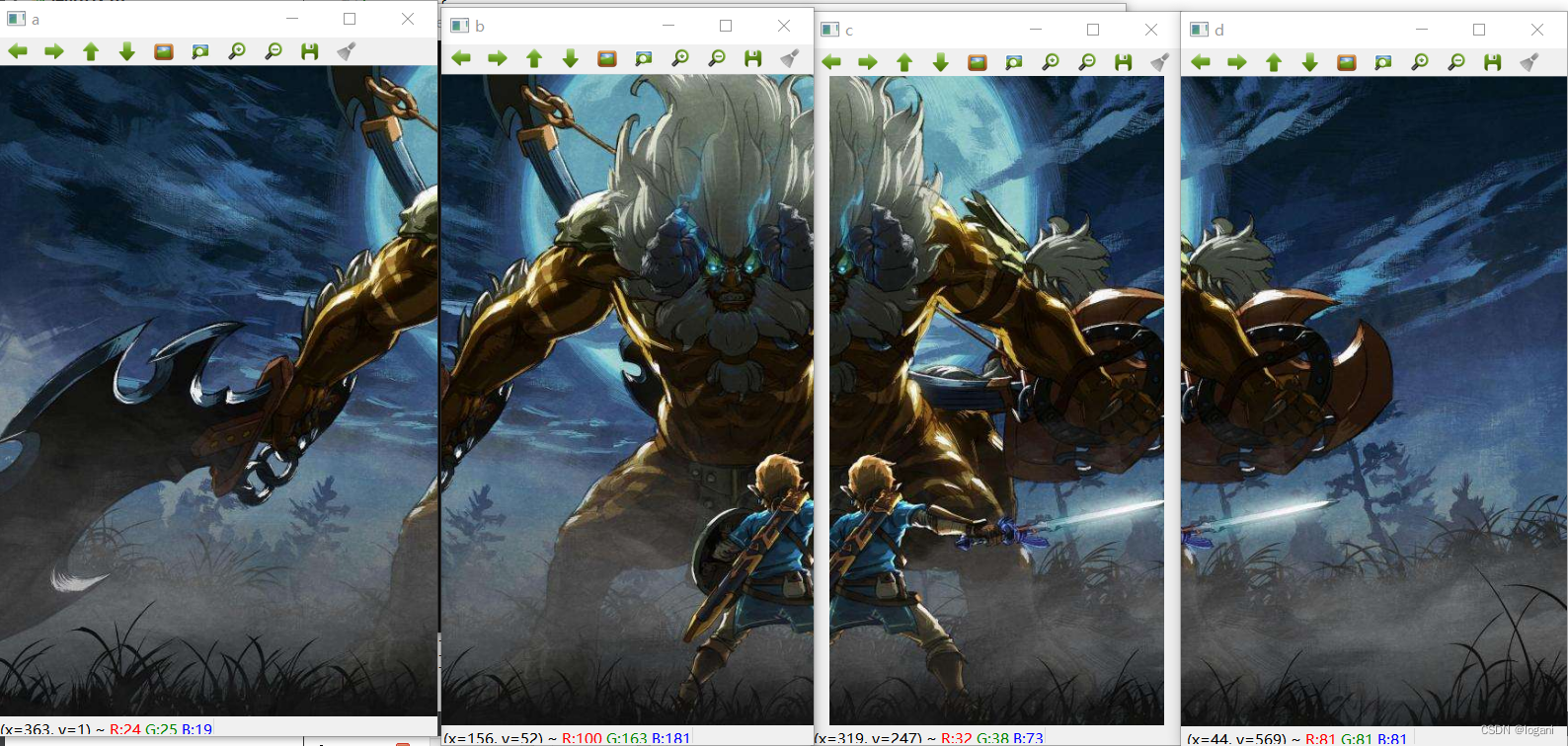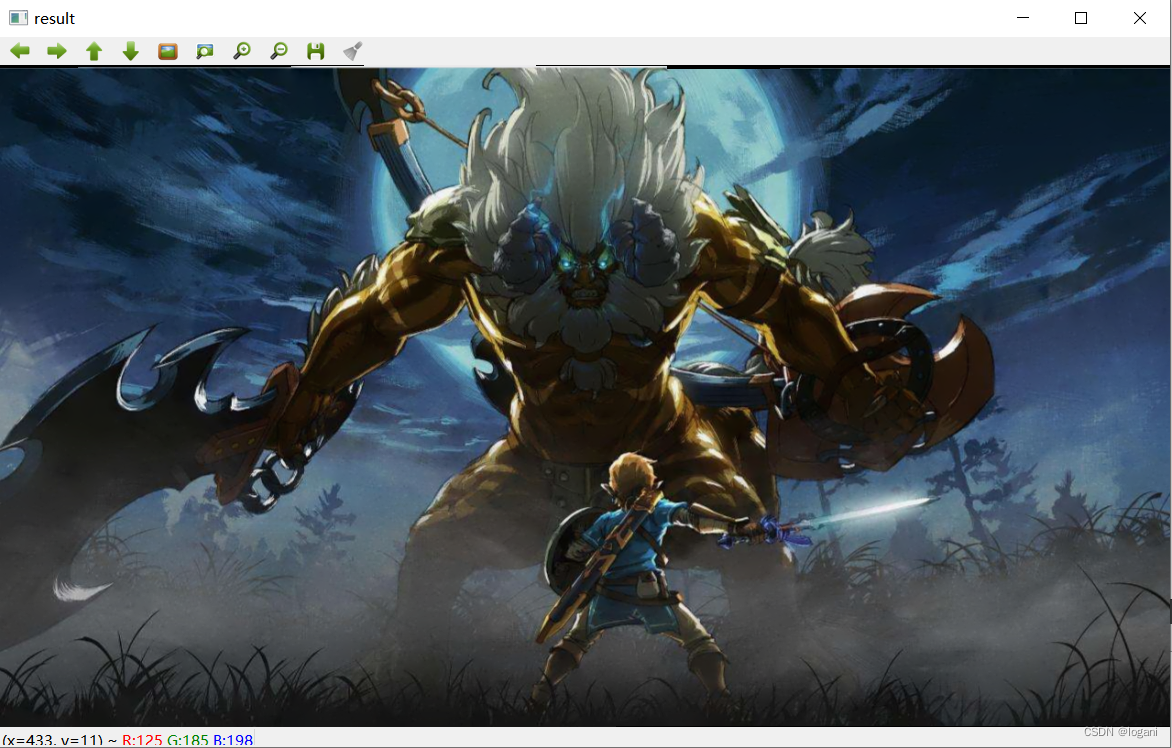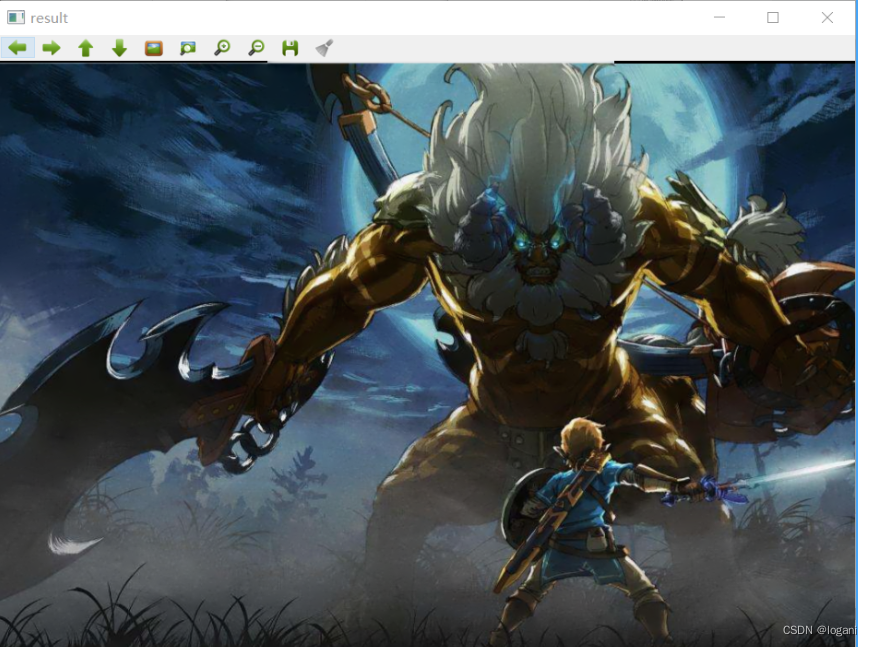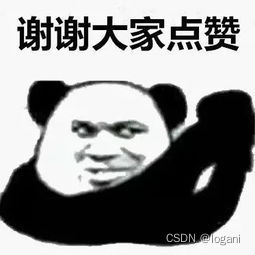介绍两种图像拼接的方法,一种是SURF算法的图像拼接,另一种是Stitcher硬拼接
首先先从简单的讲起
一、Stitcher直接拼接
可以实现多张图片一起拼接,只要两行代码就可以实现拼接;
1.首先准备多张图片,放入向量容器中
Mat img1 =imread("a.png");
Mat img2 =imread("b.png");
Mat img3 =imread("c.png");
Mat img4 =imread("d.png");
//图片放入容器中
vector<Mat>images;
images.push_back(img1);
images.push_back(img2);
images.push_back(img3);
images.push_back(img4);2. 创建Stitcher对象,调用拼接算法
第一行false是表示不使用gpu加速;
//保存最终拼接图
Mat result;
Stitcher sti=Stitcher::createDefault(false);
//将vector容器中所有的图片按顺序进行拼接,输出result
Stitcher::Status sta=sti.stitch(images,result);
if(sta!=Stitcher::OK)
{
cout<<"拼接失败"<<endl;
}
imshow("result",result);//显示注:createDefault的方法在opencv3可用,opencv4改变了调用方式,为Stitcher::create
来看看这种拼接的效果吧
原图:

4张图

第一次输出效果:

第二次输出效果:

可以看到,虽然能够拼接,但是有时候可能会丢失一部分,导致最右边没有拼接上;
虽然使用起来很简单,但是不能每次都达到想要的效果;
这边介绍第二种拼接方法:
二、SURF算法
SURF拼接一次只能拼接两张图片,其大致步骤就是匹配两幅图像中的特征点,找到最优匹配特征点;
根据配对的特征点计算坐标映射矩阵,求出右图的透视转换坐标;然后将右图透视转换后生成的图与左图进行整合,使用copyto将两图拼接
1.查找特征点
Mat left=imread("left.png");
Mat right=imread("right.png");
imshow("left",left);
imshow("right",right);
//创建SURF算法对象
Ptr<SURF> surf;
//create 函数参数 海森矩阵阀值 800特征点以内
surf =SURF::create(800);
//创建一个暴力匹配器 用于特征点匹配
BFMatcher matcher;
//特征点容器 存放特征点KeyPoint 两张图准备两个
vector<KeyPoint>key1,key2;
//保存特征点
Mat c,d;
//1.查找特征点
//左图 右图 识别特征点 是Mat对象 用c d保存
surf->detectAndCompute(left,Mat(),key2,d);
surf->detectAndCompute(right,Mat(),key1,c);
//特征点对比
vector<DMatch> matches;
matcher.match(d,c,matches);//特征点匹配过后存入matchers容器
//将匹配过后的特征点排序 从小到大,找到特征点连线
sort(matches.begin(),matches.end());2.保存最优匹配的特征点对象,进行划线
vector<DMatch>best_matches;
int prtpoint=std::min(50,(int)(matches.size()*0.15));
for(int i=0;i<prtpoint;i++)
{
best_matches.push_back(matches[i]);
}
//2.1进行划线,连接两个最优特征点对象
//NOT_DRAW_SINGLE_POINTS不画单个的点
Mat outimg;
drawMatches(left,key2,right,key1,best_matches,outimg,Scalar::all(-1),Scalar::all(-1),
vector<char>(),DrawMatchesFlags::NOT_DRAW_SINGLE_POINTS);3.特征点匹配
查找所有最优匹配特征点中,右图需要通过透视转换变形,而左图查找基准线
vector<Point2f>imagepoint1,imagepoint2;
for (int i= 0 ;i < best_matches.size();i++)
{
//查找特征点可连接处 右图需要通过透视转换变形
imagepoint1.push_back(key1[best_matches[i].trainIdx].pt);
//查找特征点可连接处 左图查找基准线
imagepoint2.push_back(key2[best_matches[i].queryIdx].pt);
}4.透视转换,图形融合
根据配对的特征点计算坐标映射矩阵,求出透视转换坐标;将右图透视转换后生成的图与左图进行整合,使用copyto将两图拼接
Mat homo = findHomography(imagepoint1,imagepoint2,CV_RANSAC);
//根据透视转换矩阵进行计算 右图的四个坐标
CalcCorners(homo,right);
//接收透视转换结果
Mat imageTransForm;
//透视转换
warpPerspective(right,imageTransForm,homo,Size(MAX(corners.right_top.x,corners.right_bottom.x),left.rows));
imshow("imageTransForm",imageTransForm);
//将左图和右转换图进行整合
int dst_width = imageTransForm.cols;//右转换图的宽
int dst_height = left.rows;//左图的高
Mat dst(dst_height,dst_width,CV_8UC3);//最终结果图
dst.setTo(0);
imageTransForm.copyTo(dst(Rect(0,0,imageTransForm.cols,imageTransForm.rows)));
left.copyTo(dst(Rect(0,0,left.cols,left.rows)));5.拼接后图片可能存在拼接处的裂缝,还有扭曲,可以进行一些优化
//图像融合的去裂缝处理操作
void OptimizeSeam(Mat& img1, Mat& trans, Mat& dst)
{
int start = MIN(corners.left_top.x, corners.left_bottom.x);//开始位置,即重叠区域的左边界
double processWidth = img1.cols - start;//重叠区域的宽度
int rows = dst.rows;
int cols = img1.cols; //注意,是列数*通道数
double alpha = 1;//img1中像素的权重
for (int i = 0; i < rows; i++)
{
uchar* p = img1.ptr<uchar>(i); //获取第i行的首地址
uchar* t = trans.ptr<uchar>(i);
uchar* d = dst.ptr<uchar>(i);
for (int j = start; j < cols; j++)
{
//如果遇到图像trans中无像素的黑点,则完全拷贝img1中的数据
if (t[j * 3] == 0 && t[j * 3 + 1] == 0 && t[j * 3 + 2] == 0)
{
alpha = 1;
}
else
{
//img1中像素的权重,与当前处理点距重叠区域左边界的距离成正比,实验证明,这种方法确实好
alpha = (processWidth - (j - start)) / processWidth;
}
d[j * 3] = p[j * 3] * alpha + t[j * 3] * (1 - alpha);
d[j * 3 + 1] = p[j * 3 + 1] * alpha + t[j * 3 + 1] * (1 - alpha);
d[j * 3 + 2] = p[j * 3 + 2] * alpha + t[j * 3 + 2] * (1 - alpha);
}
}
}完整源码:
#include <iostream>
#include <opencv2/opencv.hpp>
#include <opencv2/highgui.hpp>//图像融合
#include <opencv2/xfeatures2d.hpp>//拼接算法
#include <opencv2/calib3d.hpp>
#include <opencv2/imgproc.hpp>
using namespace std;
using namespace cv;
using namespace cv::xfeatures2d;
typedef struct
{
Point2f left_top;
Point2f left_bottom;
Point2f right_top;
Point2f right_bottom;
}four_corners_t;
four_corners_t corners;
void CalcCorners(const Mat& H, const Mat& src)
{
double v2[] = { 0, 0, 1 };//左上角
double v1[3];//变换后的坐标值
Mat V2 = Mat(3, 1, CV_64FC1, v2); //列向量
Mat V1 = Mat(3, 1, CV_64FC1, v1); //列向量
V1 = H * V2;
//左上角(0,0,1)
cout << "V2: " << V2 << endl;
cout << "V1: " << V1 << endl;
corners.left_top.x = v1[0] / v1[2];
corners.left_top.y = v1[1] / v1[2];
//左下角(0,src.rows,1)
v2[0] = 0;
v2[1] = src.rows;
v2[2] = 1;
V2 = Mat(3, 1, CV_64FC1, v2); //列向量
V1 = Mat(3, 1, CV_64FC1, v1); //列向量
V1 = H * V2;
corners.left_bottom.x = v1[0] / v1[2];
corners.left_bottom.y = v1[1] / v1[2];
//右上角(src.cols,0,1)
v2[0] = src.cols;
v2[1] = 0;
v2[2] = 1;
V2 = Mat(3, 1, CV_64FC1, v2); //列向量
V1 = Mat(3, 1, CV_64FC1, v1); //列向量
V1 = H * V2;
corners.right_top.x = v1[0] / v1[2];
corners.right_top.y = v1[1] / v1[2];
//右下角(src.cols,src.rows,1)
v2[0] = src.cols;
v2[1] = src.rows;
v2[2] = 1;
V2 = Mat(3, 1, CV_64FC1, v2); //列向量
V1 = Mat(3, 1, CV_64FC1, v1); //列向量
V1 = H * V2;
corners.right_bottom.x = v1[0] / v1[2];
corners.right_bottom.y = v1[1] / v1[2];
}
//图像融合的去裂缝处理操作
void OptimizeSeam(Mat& img1, Mat& trans, Mat& dst)
{
int start = MIN(corners.left_top.x, corners.left_bottom.x);//开始位置,即重叠区域的左边界
double processWidth = img1.cols - start;//重叠区域的宽度
int rows = dst.rows;
int cols = img1.cols; //注意,是列数*通道数
double alpha = 1;//img1中像素的权重
for (int i = 0; i < rows; i++)
{
uchar* p = img1.ptr<uchar>(i); //获取第i行的首地址
uchar* t = trans.ptr<uchar>(i);
uchar* d = dst.ptr<uchar>(i);
for (int j = start; j < cols; j++)
{
//如果遇到图像trans中无像素的黑点,则完全拷贝img1中的数据
if (t[j * 3] == 0 && t[j * 3 + 1] == 0 && t[j * 3 + 2] == 0)
{
alpha = 1;
}
else
{
//img1中像素的权重,与当前处理点距重叠区域左边界的距离成正比,实验证明,这种方法确实好
alpha = (processWidth - (j - start)) / processWidth;
}
d[j * 3] = p[j * 3] * alpha + t[j * 3] * (1 - alpha);
d[j * 3 + 1] = p[j * 3 + 1] * alpha + t[j * 3 + 1] * (1 - alpha);
d[j * 3 + 2] = p[j * 3 + 2] * alpha + t[j * 3 + 2] * (1 - alpha);
}
}
}
void directly()
{
Mat img1 =imread("a.png");
Mat img2 =imread("b.png");
Mat img3 =imread("c.png");
Mat img4 =imread("d.png");
// imshow("a",img1);
// imshow("b",img2);
// imshow("c",img3);
// imshow("d",img4);
//图片放入容器中
vector<Mat>images;
images.push_back(img1);
images.push_back(img2);
images.push_back(img3);
images.push_back(img4);
//保存最终拼接图
Mat result;
Stitcher sti=Stitcher::createDefault(false);
//将vector容器中所有的图片按顺序进行拼接,输出result
Stitcher::Status sta=sti.stitch(images,result);
if(sta!=Stitcher::OK)
{
cout<<"拼接失败"<<endl;
}
imshow("result",result);
}
int main()
{
Mat left=imread("left.png");
Mat right=imread("right.png");
imshow("left",left);
imshow("right",right);
//创建SURF算法对象
Ptr<SURF> surf;
//create 函数参数 海森矩阵阀值 800特征点以内
surf =SURF::create(800);
//创建一个暴力匹配器 用于特征点匹配
BFMatcher matcher;
//特征点容器 存放特征点KeyPoint 两张图准备两个
vector<KeyPoint>key1,key2;
//保存特征点
Mat c,d;
//1.查找特征点
//左图 右图 识别特征点 是Mat对象 用c d保存
surf->detectAndCompute(left,Mat(),key2,d);
surf->detectAndCompute(right,Mat(),key1,c);
//特征点对比
vector<DMatch> matches;
matcher.match(d,c,matches);//特征点匹配过后存入matchers容器
//将匹配过后的特征点排序 从小到大,找到特征点连线
sort(matches.begin(),matches.end());
//2.保存最优匹配的特征点对象
vector<DMatch>best_matches;
int prtpoint=std::min(50,(int)(matches.size()*0.15));
for(int i=0;i<prtpoint;i++)
{
best_matches.push_back(matches[i]);
}
//2.1进行划线,连接两个最优特征点对象
//NOT_DRAW_SINGLE_POINTS不画单个的点
Mat outimg;
drawMatches(left,key2,right,key1,best_matches,outimg,Scalar::all(-1),Scalar::all(-1),
vector<char>(),DrawMatchesFlags::NOT_DRAW_SINGLE_POINTS);
//imshow("outimg",outimg);//划线图
//3.特征点匹配
vector<Point2f>imagepoint1,imagepoint2;
for (int i= 0 ;i < best_matches.size();i++)
{
//查找特征点可连接处 右图需要通过透视转换变形
imagepoint1.push_back(key1[best_matches[i].trainIdx].pt);
//查找特征点可连接处 左图查找基准线
imagepoint2.push_back(key2[best_matches[i].queryIdx].pt);
}
//4、透视转换 图形融合
//先进行计算坐标映射矩阵
Mat homo = findHomography(imagepoint1,imagepoint2,CV_RANSAC);
//根据透视转换矩阵进行计算 右图的四个坐标
CalcCorners(homo,right);
//接收透视转换结果
Mat imageTransForm;
//透视转换
warpPerspective(right,imageTransForm,homo,Size(MAX(corners.right_top.x,corners.right_bottom.x),left.rows));
imshow("imageTransForm",imageTransForm);
//将左图和右转换图进行整合
int dst_width = imageTransForm.cols;//右转换图的宽
int dst_height = left.rows;//左图的高
Mat dst(dst_height,dst_width,CV_8UC3);//最终结果图
dst.setTo(0);
imageTransForm.copyTo(dst(Rect(0,0,imageTransForm.cols,imageTransForm.rows)));
left.copyTo(dst(Rect(0,0,left.cols,left.rows)));
//5、优化图像,中间缝合处理
OptimizeSeam(left,imageTransForm,dst);
//输出拼接图像
imshow("dst",dst);
//directly();//直接拼接
waitKey(0);
return 0;
}感谢观看!!!!
以上就是全部内容,如果对您有帮助,欢迎点赞评论,或者发现有哪里写错的,欢迎指正!























 3万+
3万+











 被折叠的 条评论
为什么被折叠?
被折叠的 条评论
为什么被折叠?










